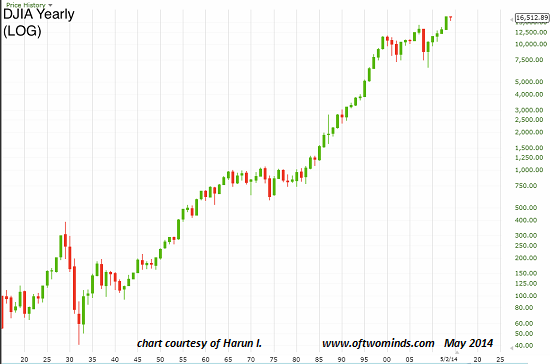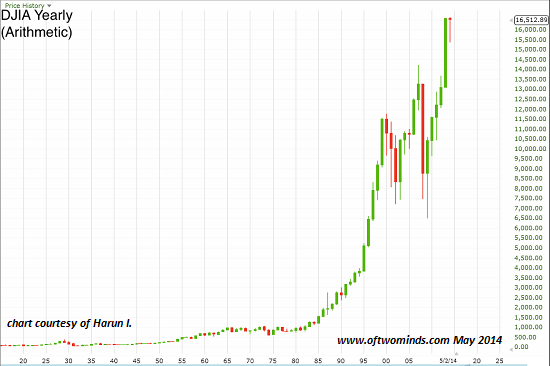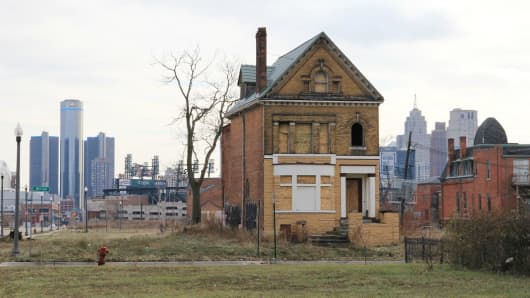The
destructive consequences of a parasitic Tyranny of the Wealthy and
Majority have yet to play out, but they will, and sooner than most
believe possible.
One
of the core concepts of my work is that our state-cartel dominated
economy is fundamentally a vast parasitic skimming machine that
redistributes the nation’s earned wealth to two constituencies that
support the skimming operation: those at the top of the financial
pyramid (i.e. super-wealthy cronies who fund the careers of the
political elite) who constitute a Tyranny of the Wealthy, and state
dependents who constitute a Tyranny of the Majority, i.e. they will
support the political elites that guarantee their share of the swag,
regardless of the consequences to the nation or the economy.
In
other words, these two self-serving groups see the productive economy
as the host that the state feeds off to fund their swag: at
the top of the pyramid, the swag is unlimited nearly-free credit
issued by the Federal Reserve and various tax breaks; at the bottom
of the pyramid, the swag is unlimited free services in the form of
social programs such as Section 8 housing, easily gamed disability
for life, food stamps, free medical care via Medicaid, etc.
The
destructive consequences of a parasitic Tyranny of the Wealthy and
Majority have yet to play out, but they will, and sooner than most
believe possible. Those
being sucked dry will never have the wealth or votes to reform the
current system, so their only choice is to opt
out and
choose to live as independently of the state-cartel Status Quo as
possible.
This
parallel economy is the community
economy,
the resilient, decentralized, entrepreneurial sectors of the economy
that not just survive without state subsidies but thrive outside
centralized dependency on the state.
What
is the foundation of a productive economy? Correspondent Jeff W.
provides an intuitively insightful answer: trading
circles.
Here
is Jeff’s explanation of trading
circles:
The trading circle is a concept I came up
with in order to try to think clearly about economic issues.
Key
definitions/observations include:
A
trading circle is any group of people who trade with each other on a
regular basis.
I use the term “trading circle” instead of
“local economy” because it helps me picture the actual traders
involved.
Unless you are Robinson Crusoe, you participate
in a trading circle.
Money, of course, is a medium of exchange.
People trade their goods and services in the trading circle using
money as a convenience.
People
have to work AND trade in order to survive. Government
counts time away from paid work as leisure time, but you have to go
to the grocery store and trade your cash for food if you want to
survive.
Activities needed for basic survival are not
leisure. Trading for basic necessities is part of the work humans
have to do (unless they are Robinson Crusoe).
Trading
circles can be growing or shrinking, becoming richer or poorer.
To picture a simple trading circle, picture a
few people on a remote island: one fishes, another makes clothing,
another builds huts. They trade with each other. Specialization of
labor benefits everyone.
People
are entering and leaving the trading circle all the time. The trading
circle is co-operative, but it is also harsh and unforgiving.
Participants want their rivals kicked out. Adam Smith wrote, “The
rivalship of competitors, who are all endeavoring to jostle one
another out of employment, obliges every man to execute his work with
a certain degree of exactness.”
Traders
participate in the trading circle as equals, though some may do
hundreds of times the business as others. Every
participant is allowed to trade. Exceptions to this rule are a king,
who does not get his money by trading but through taxation or money
printing, and a moneylender, who trades valuable money for promises
written on paper. Both the king and the moneylender claim legal
rights over their subjects/debtors that ordinary traders do not
claim.
People
do not get rich outside a good trading circle. Put
Warren Buffett in Bangladesh and he will struggle just like everyone
else. Your fortune depends on belonging to a good trading circle.
The trading circle is self-correcting in terms
of dealing with gluts and shortages. Participants move from one line
of work to another according to the advantages they see.
The trading circle tends toward efficiency,
improved quality, and reduced prices. It is a progressive institution
in that sense. Its free operation tends to make everyone richer.
A
trading circle must guard against thieves. Today,
America’s trading circle, however, is basically owned and operated
by thieves.
America used to be known for having good
quality products at low prices. That was back when our trading circle
was functioning properly.
Sick people, the very old, and the young do not
directly participate in the trading circle. Society must make
provisions for them (such as having strong families to take care of
them). If the young are not cared for properly, society does not
survive.
Robots tend to kick people out of the trading
circle.
People
who are dependent on the state are only partly in the trading
circle. They
are consumers but not producers. The same goes for government
workers. They are thus not full members of the community like the
full participants in the trading circle.
All businesses want to skew the rules of the
trading circle in their favor. It is thus necessary to have someone
in charge of the trading circle who is above it all and whose
commitment is to its fair operation. (Editor’s note: this is the
definition of good governance.)
A
good community tries to find niches for the young people in the
trading circle. The
trading circle may be an unforgiving competitive environment, but the
community in which the trading circle resides need not be such an
environment.
The trading circle works best when everyone
focuses on his own self interest. Altruistic and charitable work
should take place outside the trading circle.
A corrupt government kicks everyone out of the
trading circle who is not an insider or who does not pay bribes. This
leads to higher prices and reduced quality, which is the usual
condition of most trading circles historically.
When I think about an economic issue, I always
ask, “How does this affect the trading circle?”
A
person’s niche in the trading circle as a producer and seller is
primary; his role as consumer is secondary. If
you have a good niche as a producer, you automatically have the means
to be a consumer. This is another way of expressing Say’s Law,
which is that supply creates its own demand. If you lose your niche
as a producer, your ability to be a consumer is impaired because you
have lost your income.
A
person often obtains his niche by degrees. In
the old days, there used to be unpaid apprentices, paid apprentices,
journeymen, and masters. The master craftsman was a guy who had
earned a solid niche, and he usually employed journeymen and
apprentices.
A
person’s niche is dependent on profitability. Many
people are hanging on to their niche by a thread, being very close to
being driven out by financial losses. Government-imposed burdens on
the trading circle have the effect of pushing people out of their
niches and into failure and poverty. (Government tries to solve this
problem through cartelization.)
Success of the trading circle hinges on
business profitability. That is where all the factors come together
to determine if a person can stay in his niche or whether a new niche
can be created.
A
niche in the trading circle must be continually earned. Even
if you inherit a business, you still will have to work to ensure its
survival. Earning a niche in the trading circle is like physical
exercise: no one can do it for you. Government
can give you a half-participation in the trading circle, where you
are a consumer but you don’t produce anything.
Since taxes and inflation harm full
participants, there is no free lunch in adding government-supported
consumers. Government cannot give you a niche as a producer–or they
can only do it through the corrupt act of giving you an unfair
advantage.








 The
Erie County sheriff says he's done making public comments about a
cellphone surveillance device used by his police agency to gather
information on persons of interest.
The
Erie County sheriff says he's done making public comments about a
cellphone surveillance device used by his police agency to gather
information on persons of interest.




